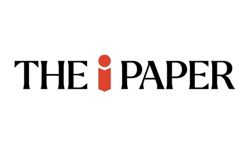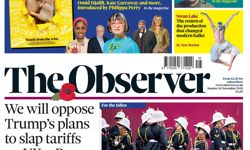In 2007, I reported here that digital editions of print magazines appeared to perhaps be reaching a saturation point among US publishers.
I noted that in the B2B sector, while many publishers continued to realise significant cost savings from offering digital editions of their print publications, launches of such editions appeared to be slowing down, in part because of lukewarm advertiser response. Meanwhile, on the consumer side, the digital magazine format had generated little uptake among consumer readers, and was being used by large publishers mainly as a premium or sampling device to sell print subscriptions on the web.
Fast-forward two years, and the subject seems worth revisiting. Not because there’s been a sudden mass embrace of digital magazines by consumer readers or by advertisers, but because relentlessly rising costs combined with sinking ad revenue are motivating publishers to employ the technology more creatively or begin using it on an ambitious scale for the first time.
The greater push to try to monetise digital magazine technology through various new models is particularly intriguing on the consumer side. Examples in recent months include:
* US News & World Report: The perennial third-runner in the newsmagazine space was forced to cut frequency of its print flagship to monthly this year, but soon after announced the launch of a digital-only weekly title, US News Weekly. This is not a digital replica of the flagship (which already exists), but a spin-off covering the latest news from Washington, as the now-monthly flagship focuses on in-depth features about single topics such as health and education.
The digital newsweekly is being offered as a free value-added to paid US News & World Report print subscribers, but the publishers are also attempting to build a paid circulation base (plus advertising) sufficient to make the venture profitable on its own. Stand-alone full-year subs to the digital newsweekly are priced at $19.95, and plans call for making it available through Amazon’s Kindle and forming a distribution partnership with one of the digital magazine vendors.
* PC Magazine: This 27-year-old Ziff Davis Media title, also caught between rising costs and declining print ad revenue, folded its print edition in favour of digital-only as of February. The magazine, which had an existing digital version, has a lot of work ahead of it to make this conversion a go: As of mid-year ’08, it had about 14,000 paid digital-only subscribers among total paid / verified circulation of about 646,000. Still, a tech title would seem to have an edge in making the digital model work in the consumer arena, and Ziff is pushing hard. Promotions to existing print subscribers are stressing the format’s interactivity, searchability and environmental friendliness, with an introductory rate of 24 digital issues for $14.97, or 12 for $9.97 (versus an average sub price of nearly $24 for the now-defunct print edition).
* Outside’s Go: This travel and style-oriented spin-off of the well-established outdoor special interest title Outside was forced to reduce print frequency from six to two times for 2009, but is supporting its ad-driven model by introducing two bonus digital editions for both paid and nonpaid recipients who supply their email addresses.
These types of digital models are still relatively rare experiments in the consumer arena, but we may see more as the recession drags on, particularly after magazine postal rates jump by another 4% this May. It’s no coincidence that digital vendor Zinio is seeking to broaden the public’s awareness / acceptance of digital editions by promoting free one-year digital subscriptions to consumer magazines (a "Read Green" programme stressing digital’s eco-friendliness), or that it recently announced a partnership with Plastic Logic to launch an e-reader device tailored to viewing magazine content.
BPA figures
Evidence of growing efforts to leverage digital publication technology can also be seen on the B2B side. BPA Worldwide reported auditing about 140 digital editions in second-half 2005; that number reached nearly 300 as of first-half 2008 (up 28% from second half ’07). While digital circulation makes up only about 13% of total circ on average across these titles, some tech publications are now 30% to 50% digital. And the auditor’s recent announcement that it’s considering ways to perhaps allow non-requested electronic circulation to be reported on statements (without allowing publishers to "unnaturally" boost circulation levels) would certainly seem a sign of publishers’ increasing need and determination to shift toward digital.
B2B publishers continue to report resistance from some advertisers and media buyers even to clearly requested, audited digital circulation (a phenomenon that’s never made a lot of sense, particularly in this supposed Age of Integration). But publishers are getting savvier about getting off the defensive and instead focusing on the strengths that digital can bring to bear for advertisers. One example is PennWell, which has not only pushed into paid digitally based publication site licenses within corporations, but is developing digital publication features like sponsored editorial video elements and (clearly identified) interactive advertorial content supplementing editorial features within special topic focus areas.
In short, it will be interesting to watch how well individual publisher efforts to leverage digital magazine formats succeed, and how all of this plays out over time within the broader scope of strategies to create new business models.
FEATURE
Economy Driving New Efforts to Leverage Digital Magazines
The fortunes of e-editions have ebbed and flowed since they burst onto the scene about eight years ago. Initial high expectations then gave way to scepticism, especially in the consumer sphere. Yet, says Karlene Lukovitz, rising print costs and falling ad revenues are leading some publishers to have another crack at e-editions.










